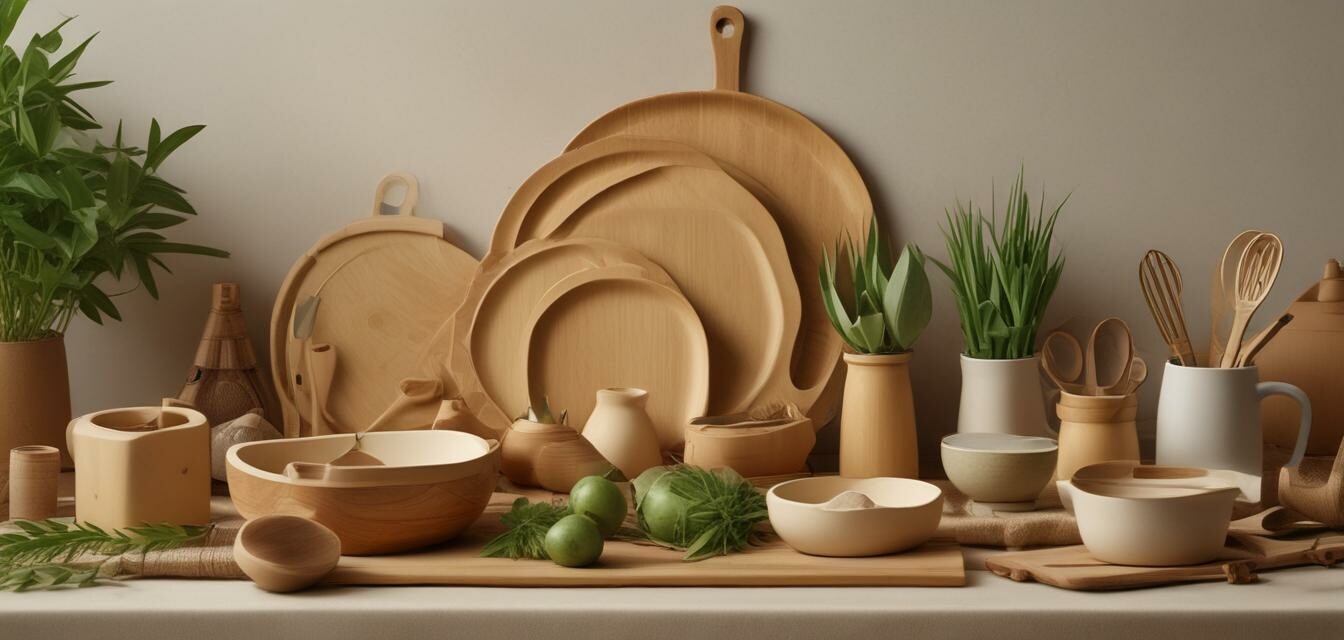
The Journey of Sustainable Kitchenware
Key Takeaways
- The production of sustainable kitchenware starts with eco-friendly materials.
- Every step in the lifecycle of kitchenware impacts the environment.
- Consumer choices influence the demand for eco-friendly products.
- Sustainable kitchenware is usually designed for durability and longevity.
- By choosing sustainable options, consumers contribute to a healthier planet.
The kitchen is the heart of every home, but it also plays a pivotal role in our environmental impact. The journey of sustainable kitchenware involves several stages, each crucial in reducing waste and promoting sustainability. In this article, we will explore how these eco-friendly products are created, their benefits, and how they make a difference in our everyday lives.
What is sustainable kitchenware?
Sustainable kitchenware refers to products that are made from eco-friendly materials that minimize environmental impact. These materials include bamboo, recycled plastics, and organic fabrics. They not only serve their functional purpose in the kitchen but also reduce waste and pollution from production to disposal.
Materials used in sustainable kitchenware
| Material | Source | Benefits |
|---|---|---|
| Bamboo | Fast-growing grass | Biodegradable, renewable, and durable. |
| Recycled plastics | Post-consumer waste | Reduces landfill waste and energy consumption. |
| Organic cotton | Non-GMO agriculture | Free from harmful chemicals and pesticides. |
| Stainless steel | Recyclable metals | Long-lasting and 100% recyclable. |
The process from development to consumer
Understanding the journey of sustainable kitchenware begins with production. Here’s how it works:
1. Sourcing materials
Material selection is key; sustainable kitchenware companies prioritize eco-friendly alternatives. This reduces the environmental footprint and promotes sustainable practices in supply chains. For instance, bamboo is harvested in a way that ensures regrowth and supports the environment.
2. Manufacturing
In the manufacturing phase, companies focus on minimizing waste and energy use. Many eco-friendly brands employ green manufacturing processes, which often means less pollution and more efficient use of resources.
3. Distribution
Once products are manufactured, the distribution process can either uphold or undermine sustainability. Many brands are now opting for minimal packaging and carbon-neutral shipping options, drastically reducing their carbon footprint.
4. Consumer use
A significant part of the sustainable kitchenware lifecycle is understanding how consumers use these products. Sustainable kitchenware is designed for longevity; thus, opting for such items eliminates the need for frequent replacements.
5. End of life
Lastly, considering the disposal of kitchenware is crucial. Many sustainable products are biodegradable or recyclable, reducing waste in landfills and contributing to a circular economy. For more insights on alternatives, check our guides on bamboo kitchenware and compostable kitchen tools.
Pros
- Eco-friendly materials reduce environmental impact.
- Durable products save money in the long run.
- Promotes a sustainable lifestyle for consumers.
Cons
- Sometimes more expensive than traditional options.
- Availability may be limited compared to conventional products.
The growing importance of sustainable kitchenware
As climate concerns escalate, so does the importance of sustainable kitchenware. Consumers are increasingly aware of their impact on the planet. Choosing sustainable kitchenware is a significant choice that can help drive demand for environmentally friendly products. For further reading on the latest trends in eco-friendly products, visit our News and Trends section.
How to choose sustainable kitchenware
When shopping for kitchenware, here are some factors to consider:
- Material: Look for products made from renewable, recycled, or compostable materials.
- Durability: Opt for items that are built to last, minimizing the need for replacements.
- Brand values: Support companies that prioritize environmental sustainability throughout their supply chain.
Tips for beginners
- Start small by replacing one or two items with eco-friendly alternatives.
- Read labels to understand the materials used in products.
- Research brands that align with your sustainability values.
Conclusion
The journey of sustainable kitchenware is a testament to how consumer choices can foster a healthier planet. By choosing eco-friendly materials, understanding the production process, and considering the lifecycle of kitchenware, we can make informed decisions that benefit both our kitchens and the environment.
For those interested in exploring different eco-friendly kitchenware options, take a look at our comprehensive guides on energy-efficient appliances and reusable silicone products. By making the switch to sustainable options, you’re not just investing in your kitchen; you're investing in the future of our planet.


